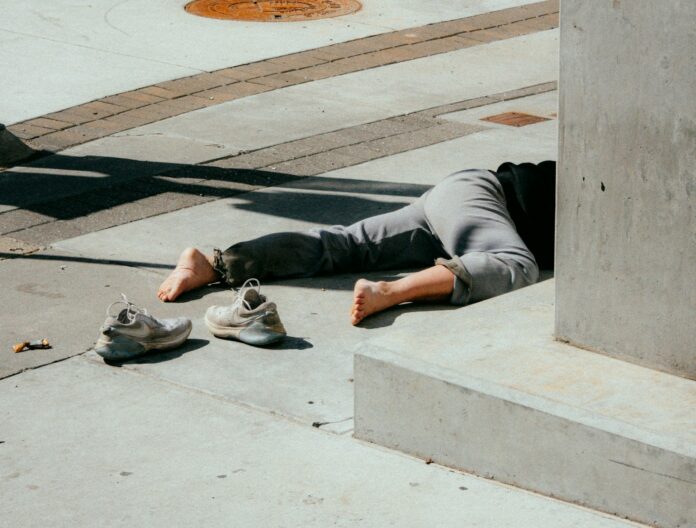Youngest convicted murderers in UK since 1993 after fatal machete attack on 19-year-old in park
In a Wolverhampton park, an apparently unprovoked machete attack resulted in the tragic death of Shawn Seesahai, 19. On Monday, two 12-year-old boys were found guilty of his murder, becoming two of the youngest convicted murderers in the UK. The jurors reached a unanimous verdict.
Shawn Seesahai, originally from Anguilla in the Caribbean, had moved to Birmingham for cataract treatment. On November 13th, he went to Wolverhampton with friends and spent time at Stowlawn playing fields. The two defendants, who were not known to Seesahai, claimed that he had asked them to move off a bench, leading to the deadly confrontation.
One boy wielded a machete, slashing Seesahai’s legs and stabbing him through the heart. The other boy reportedly punched and stamped on Seesahai’s head. The attack left Seesahai with severe injuries, including a fractured skull and a 23cm-deep wound that penetrated his lung and heart.
The boys blamed each other for the fatal injuries. One admitted possessing the machete but denied stabbing Seesahai. Both boys maintained their innocence throughout the trial.
Suresh Seesahai, Shawn’s father, expressed sympathy for the killers’ parents, emphasizing the need for attention to children’s behaviour to prevent such tragedies. “This world is a different world, kids are dangerous now. If we don’t pay attention to them this will keep happening,” he said.
Prosecutor Michelle Heeley KC described the attack as a joint effort by the boys to kill or cause serious harm to an unarmed and defenceless Seesahai. Despite their young age, the boys’ actions were deliberate and brutal.
On the day of the murder, the boys roamed the streets with a female friend, passing the machete between them. According to one defendant, Seesahai approached and told them to move, placing one of the boys in a headlock, which triggered the attack. Seesahai’s friend recounted running for his life while Seesahai stumbled and fell, leading to his fatal stabbing.
After the attack, the boys ran away, with one receiving a ride home from his grandmother. He used bleach to clean the machete and hid it under his bed. Forensic evidence revealed bloodstains on their clothing and footwear. Hours before the attack, one of the boys posed with the machete for a photo.
In the hours following the murder, the boys played video games and remained unaware of Seesahai’s death until the next day. Phone records showed they searched for news articles about the attack and queried “How many criminal records can you have to leave the country.”
Special arrangements during the trial included reduced court hours and simplified proceedings due to the boys’ age. They sat in the main courtroom with family members and intermediaries instead of the dock.
Jonathan Roe, the senior crown prosecutor for CPS West Midlands, condemned the senseless violence, highlighting that the boys, fascinated by violence, should not have been armed and roaming the streets. Sentencing for the boys is expected in July.
Analysis:
Political Impact
The conviction of these two young boys has significant political implications, particularly in discussions about juvenile crime and justice reform. It highlights the urgent need for policies that address youth violence and the social conditions that lead to such extreme behaviour. Lawmakers may face increased pressure to implement preventive measures, such as improved education and mental health support, to prevent similar incidents.
Social Reflection
This case reflects broader societal concerns about youth behaviour and the influences that drive children towards violence. It underscores the importance of parental supervision, community involvement, and effective intervention strategies to guide at-risk youth. The incident has sparked debates about the effectiveness of current social systems in addressing the needs and challenges of young people.
Psychological Aspect
The psychological impact on both the perpetrators and the victim’s family is profound. For the young defendants, their involvement in such a violent act at an early age raises questions about their psychological development and the factors contributing to their behaviour. The trauma experienced by Shawn Seesahai’s family is immeasurable, as they grapple with the loss of a loved one in such a brutal manner. This case highlights the need for comprehensive psychological support for all affected parties.
Sociological Angle
Sociologically, this case highlights the role of community environments in shaping youth behaviour. The presence of a machete and the boys’ roaming behaviour suggest a community context where such actions were possible and perhaps even normalized. This points to the need for community-based interventions that provide safe and supportive environments for young people, reducing the likelihood of such violent behaviours.
Fashion Culture
While not directly linked to fashion, the case may influence public perceptions and discourse around the portrayal of violence in media and entertainment, including video games. The defendants’ post-attack behavior, including playing video games, raises questions about the impact of violent media on young minds and their desensitization to real-world violence. This could lead to renewed calls for responsible media consumption and the promotion of positive, non-violent role models.
